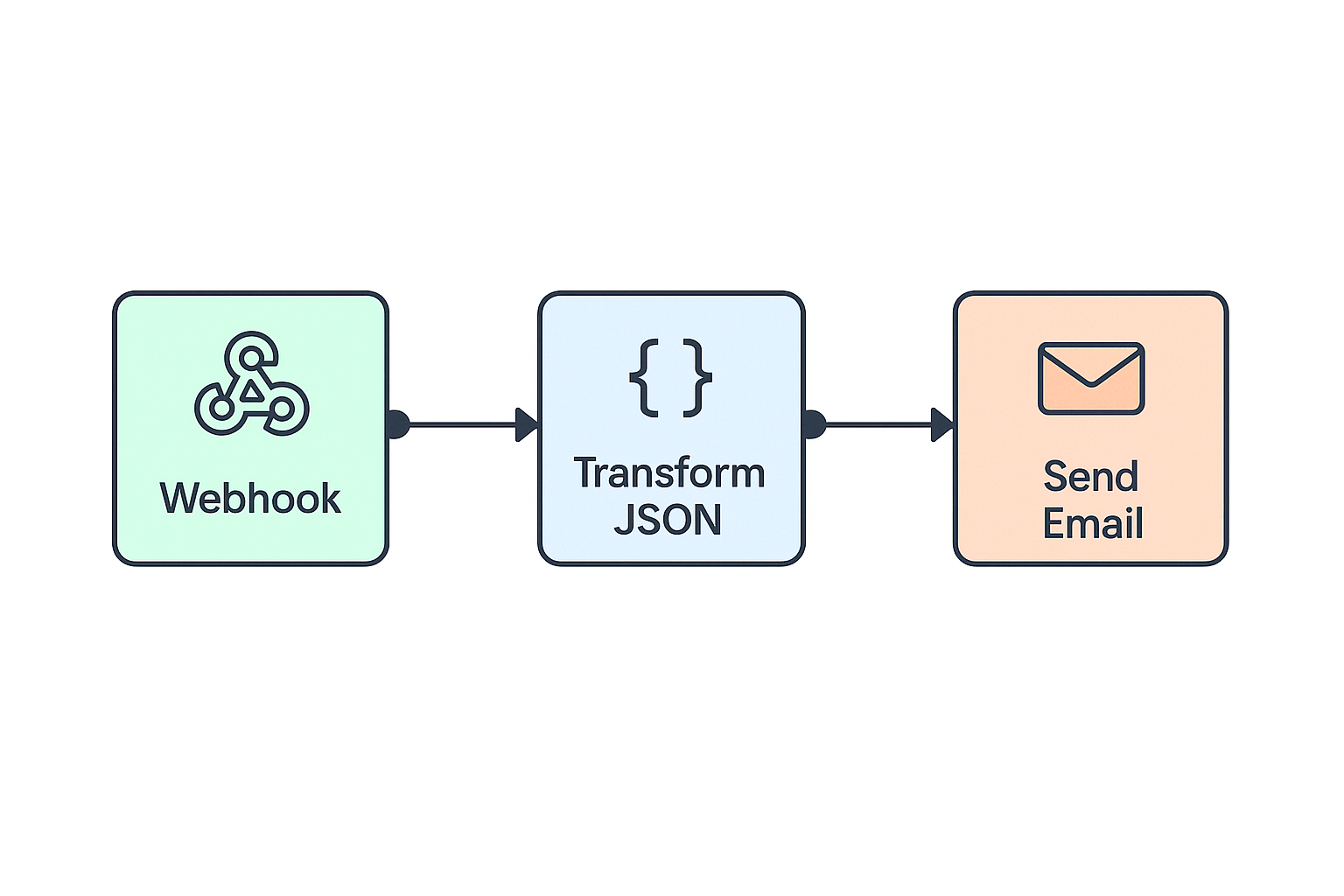No-code database spectrum: spreadsheets to proper databases
No-code databases sit between spreadsheet familiarity and relational database power. They help startups, ops teams, and non-technical staff manage structured data without writing SQL.
- Spreadsheets (Excel, Google Sheets): flexible, but fragile at scale.
- Airtable, Baserow, NocoDB: structured, relational, API-driven, user-friendly.
- Traditional databases (Postgres, MySQL): powerful, but require technical expertise.
The sweet spot for no-code DBs: teams needing structured collaboration, automation, and integrations without DBA overhead.
Airtable: polished UX with pricing and scaling concerns
Airtable is the market leader, offering a refined user experience and rich ecosystem.
Advanced features: automations, scripting, views
- Multiple views: grid, kanban, gallery, Gantt.
- Automations: trigger emails, Slack messages, or workflows.
- Scripting: extend with JavaScript.
- Marketplace: 50+ extensions (apps for charts, forms, analytics).
Airtable shines in non-technical adoption—anyone can onboard in minutes.
Export limitations and vendor lock-in considerations
- Exports limited to CSV; relationships and formulas don’t migrate cleanly.
- APIs exist, but rate limits can bottleneck integrations.
- Vendor lock-in risk: once workflows live inside Airtable, switching costs rise quickly.
- Pricing grows steeply: Pro plans = $20+/user/month.
Best fit: teams prioritizing UX, ready to pay SaaS pricing.
Baserow: open-source Airtable alternative
Baserow is a European-built, open-source challenger aiming for Airtable parity.
Self-hosted setup and cloud offering comparison
- Self-hosted: run on Docker, full control, free.
- Cloud: managed SaaS, still cheaper than Airtable.
- Data stays in your infra → GDPR compliance advantage.
Feature parity and development roadmap
- Strong support for relational data, real-time collaboration.
- Active roadmap: formulas, roles/permissions, Kanban views.
- Lacks some Airtable polish (extensions, advanced automations), but closing gap.
Best fit: teams needing Airtable-like UX with ownership and cost control.
NocoDB: turning databases into spreadsheets
NocoDB flips the model: it layers a spreadsheet-like UI on top of MySQL/Postgres.
MySQL/PostgreSQL compatibility advantages
- Works with existing databases—no data migration required.
- Full SQL power under the hood.
- Can scale as far as your DB scales.
Technical requirements and performance characteristics
- Requires hosting and database management skills.
- More “developer-friendly” than Airtable/Baserow.
- Excellent for hybrid teams (tech + non-tech) who want a spreadsheet UI for production DBs.
Best fit: companies already running relational databases, needing a no-code UI for business teams.
Use case analysis: when each solution fits
- Airtable → Marketing, content ops, lightweight project tracking, early-stage startups.
- Baserow → Privacy-conscious EU startups, cost-sensitive teams, compliance-driven industries.
- NocoDB → Developer-heavy teams, startups with existing Postgres/MySQL infra.
Migration paths and data portability
- Airtable → CSV export → Baserow/NocoDB import (lossy for formulas/relations).
- Baserow → JSON/CSV export, cleaner migration.
- NocoDB → native DB portability; easiest long-term escape hatch.
Rule of thumb: the earlier you plan migrations, the less painful.
API capabilities and developer integration
- Airtable: REST API, stable but strict rate limits (5 requests/sec).
- Baserow: REST + GraphQL, strong developer roadmap.
- NocoDB: Auto-generates REST + GraphQL from DB schema.
For developers, NocoDB offers the most flexibility; Airtable offers the most ecosystem integrations.
Cost analysis across team sizes and data volumes
| Tool | Entry Cost | Scaling Cost | Hidden Costs |
|---|---|---|---|
| Airtable | Free tier (1,200 rows/base) | $20+/user/month | Lock-in, API rate limits |
| Baserow | Free (self-hosted) | Managed cloud cheaper than Airtable | DevOps time if self-hosted |
| NocoDB | Free OSS | Infra cost = DB hosting | Requires DBA/infra skills |
At 10 users, 100k rows:
- Airtable: ~$200/month.
- Baserow: ~$50–100/month (cloud).
- NocoDB: ~$20–50/month infra, plus ops overhead.
Its all about choices
- Airtable = polish + speed, but pricey and lock-in heavy.
- Baserow = best open-source Airtable-style option for budget-conscious teams.
- NocoDB = great bridge for technical orgs wanting no-code UI on top of real DBs.
Decision depends on your budget, compliance needs, and team’s technical comfort.
FAQs
Is Baserow production-ready?
Yes, for small/medium teams. Large-scale maturity still evolving.
Does NocoDB replace Airtable?
Not directly—it’s more a bridge between SQL and no-code UI.
Can I migrate from Airtable easily?
You can export CSVs, but formulas and linked fields won’t carry over cleanly.

